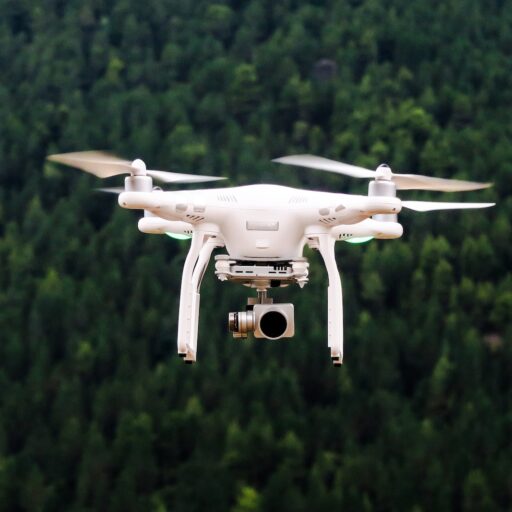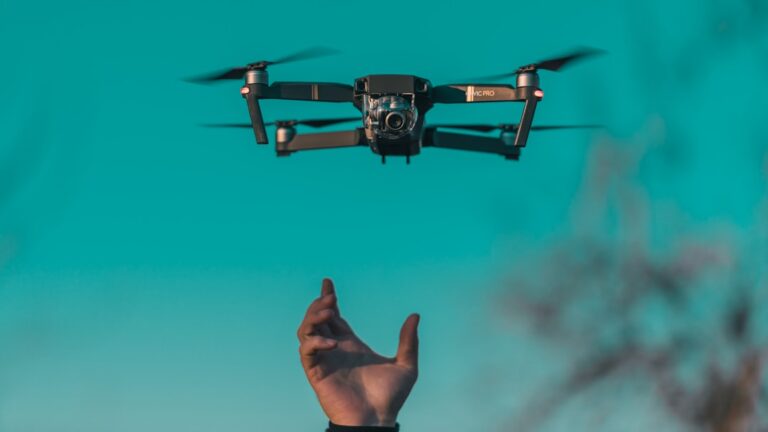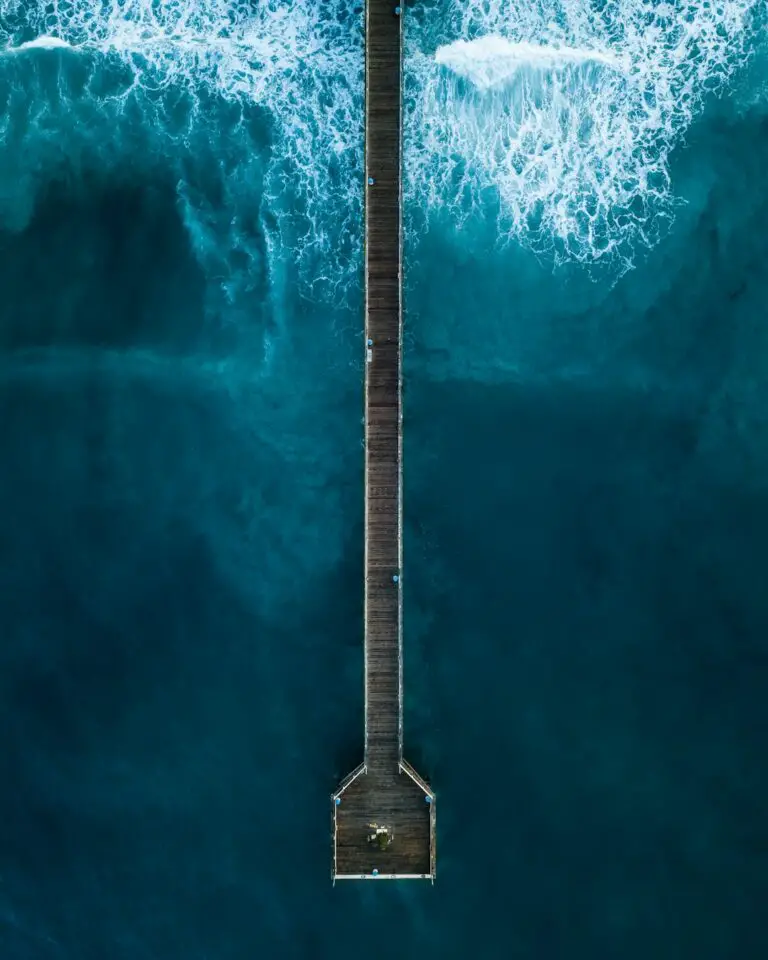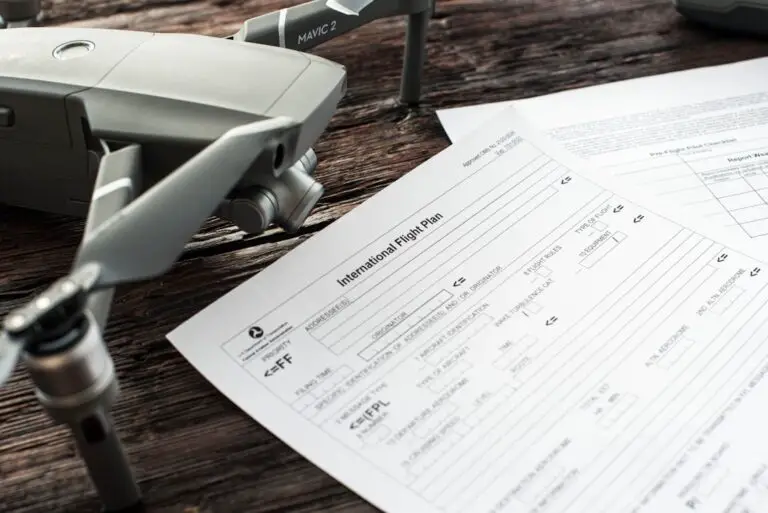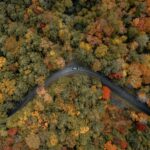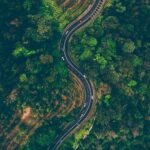Support our educational content for free when you purchase through links on our site. Learn more
Where Is It OK to Fly a Drone? 12 Must-Know Spots in 2025 🚁
Ever found yourself staring up at the sky, drone in hand, wondering, “Wait, where can I actually fly this thing without landing in hot water?” You’re not alone. The world of drone flying is thrilling but tangled in a web of airspace rules, no-fly zones, and local laws that can trip up even seasoned pilots. At Drone Brands™, we’ve logged thousands of flight hours and seen firsthand how knowing where to fly can make or break your aerial adventure.
Did you know that flying near an airport without permission can land you a fine of up to $27,500? Or that national parks are a strict no-fly zone, with penalties including jail time? But don’t worry — this guide uncovers 12 safe, legal, and exciting places to fly your drone in 2025, plus the no-go zones you must avoid. Ready to unlock the skies with confidence? Let’s dive in!
Key Takeaways
- Know your airspace: Most recreational flying happens in Class G (uncontrolled) airspace below 400 feet.
- Get permission: Always check local laws and get permits for public parks or private property.
- Avoid no-fly zones: Airports, national parks, military bases, and critical infrastructure are off-limits.
- Use tech tools: Apps like B4UFLY and DJI FlySafe help you check airspace and restrictions in real time.
- Understand your pilot status: Recreational vs. commercial flying have different rules and certifications.
- Fly responsibly: Respect privacy, maintain visual line of sight, and prioritize safety.
Ready to gear up and take off? Check out top drones and accessories on Amazon and DJI to start your journey:
- 👉 Shop DJI Drones: Amazon | DJI Official
- Drone Accessories: Amazon | Walmart
Stay tuned as we unpack everything you need to know to fly smart, safe, and legal!
Table of Contents
- ⚡️ Quick Tips and Facts: Your Drone Flying Cheat Sheet
- 📜 The Drone Flying Landscape: A Brief History of Airspace Regulation
- ✈️ Understanding Airspace: It’s Not Just Open Sky!
- 🧑✈️ Recreational vs. Commercial: Knowing Your Drone Pilot Persona
- ⚖️ The FAA’s Guiding Hand: Part 107 vs. Recreational Rules
- ✅ Where Can You Really Fly? Unlocking Safe and Legal Drone Zones
- ❌ No-Fly Zones: Places Where Your Drone is Definitely NOT Welcome
- 🗺️ Beyond Federal: Navigating State and Local Drone Laws
- 🤫 Privacy Matters: Flying Responsibly and Respecting Others
- 📱 Tools of the Trade: Apps and Resources for Airspace Awareness
- 🛑 Safety First: Best Practices for Every Flight
- 🌍 What About International Skies? A Quick Global Glimpse
- 🛡️ Drone Insurance: Protecting Your Investment and Yourself
- 🏁 Conclusion: Soaring Smartly and Legally
- 🔗 Recommended Links
- ❓ FAQ: Your Burning Drone Questions Answered
- 📚 Reference Links
⚡️ Quick Tips and Facts: Your Drone Flying Cheat Sheet
Welcome to the sky, fellow drone adventurers! Before you launch your quadcopter into the wild blue yonder, here’s a quick cheat sheet from the drone pilots at Drone Brands™ to keep you flying smart, safe, and legal. If you’re wondering where can I fly my drone?, this section is your launchpad.
- ✅ Always register your drone if it weighs over 0.55 lbs (250g) in the US, or as per your country’s rules.
- ✅ Keep your drone within visual line of sight (VLOS).
- ✅ Fly below 400 feet AGL (Above Ground Level) unless you have special authorization.
- ✅ Avoid flying near airports, heliports, or controlled airspace without permission.
- ✅ Respect privacy and never fly over crowds or private property without consent.
- ✅ Check local laws and temporary flight restrictions (TFRs) before every flight.
- ✅ Use apps like B4UFLY or DJI FlySafe to check airspace status instantly.
Fun fact: The FAA calls drones “unmanned aircraft systems” (UAS) and treats them like any other aircraft — so yes, your drone is officially an airspace citizen! Source: FAA.gov
We’ve seen pilots get grounded for ignoring these basics — don’t be that guy! Stick around as we unpack everything you need to know about flying your drone legally and safely. Ready to take off? 🚀
📜 The Drone Flying Landscape: A Brief History of Airspace Regulation
Drones have zoomed from niche gadgets to mainstream tools in a flash — but the laws governing them have had to catch up fast. Here’s a quick flight path through the history of drone regulations:
- Pre-2012: Drones were mostly hobbyist toys with little regulation.
- 2012: FAA started regulating drones as aircraft, requiring registration and pilot certification.
- 2016: Introduction of Part 107 rules for commercial drone pilots.
- 2021: Remote ID rules began rolling out, requiring drones to broadcast identification signals.
- 2023 and beyond: Increasing integration of drones into controlled airspace with LAANC (Low Altitude Authorization and Notification Capability) and more advanced authorizations.
This evolution reflects the growing importance of drones in industries like filmmaking, agriculture, inspection, and delivery — but also the need to keep the skies safe for everyone. For a deep dive, check out the FAA’s Drone Overview.
At Drone Brands™, we’ve seen how these rules have shaped the drone community — from cautious beginners to seasoned pros. Knowing the history helps you appreciate why certain rules exist and how to navigate them confidently.
✈️ Understanding Airspace: It’s Not Just Open Sky!
Think the sky above your backyard is a free-for-all? Think again! The airspace is divided into classes, each with its own rules. Here’s a quick rundown:
| Airspace Class | Description | Drone Flying Rules |
|---|---|---|
| Class A | 18,000 ft and above | No drone operations allowed |
| Class B | Around major airports | Requires FAA authorization (LAANC) |
| Class C | Around medium airports | Requires FAA authorization (LAANC) |
| Class D | Around smaller airports | Requires FAA authorization (LAANC) |
| Class E | Controlled airspace not in B/C/D | May require authorization depending on altitude |
| Class G | Uncontrolled airspace (below 400 ft in many areas) | Generally open for recreational drone flights |
Key takeaway: Most recreational drone pilots fly in Class G airspace, which is uncontrolled and generally safe for drones — but always check local restrictions and temporary flight restrictions (TFRs).
For a visual treat, the FAA’s Airspace Map is a must-see.
🧑✈️ Recreational vs. Commercial: Knowing Your Drone Pilot Persona
Are you flying for fun or for business? This distinction matters big time because it affects what rules you must follow.
| Aspect | Recreational Flying | Commercial Flying (Part 107) |
|---|---|---|
| Purpose | Hobby, fun, personal use | Business, paid services, research |
| Registration | Required if drone > 0.55 lbs | Required, plus pilot certification |
| Pilot Certification | Must pass TRUST test | Must pass FAA Part 107 knowledge test |
| Flight Rules | Fly below 400 ft, VLOS, no flying near airports without permission | Same, plus additional operational restrictions |
| Authorization | LAANC authorization for controlled airspace recommended | Required for controlled airspace and certain operations |
We’ve seen many new pilots confused by this — but here’s the secret: If you’re making money or using your drone for work, you’re commercial. That means more paperwork but also more opportunities! Check out our Drone Laws and Regulations for detailed guides.
⚖️ The FAA’s Guiding Hand: Part 107 vs. Recreational Rules
The FAA’s Part 107 rules are the backbone for commercial drone operations in the US. Here’s how they stack up against recreational rules:
| Feature | Recreational Pilots | Part 107 Commercial Pilots |
|---|---|---|
| Maximum Altitude | 400 feet AGL | 400 feet AGL (with some waivers for higher) |
| Visual Line of Sight | Required | Required |
| Night Flying | Not allowed without waiver | Allowed with waiver |
| Flying Over People | Not allowed | Allowed with restrictions or waiver |
| Remote ID | Required for drones >0.55 lbs | Required |
| Authorization for Controlled Airspace | Recommended via LAANC | Required via LAANC |
Pro tip: If you want to fly commercially, passing the Part 107 test is your golden ticket. It’s not as scary as it sounds — we’ve helped many pilots ace it with flying colors! For more, see FAA’s Part 107 Overview.
✅ Where Can You Really Fly? Unlocking Safe and Legal Drone Zones
Now for the million-dollar question: Where can you fly your drone without getting a ticket or worse? Here’s the scoop from our aerial adventures at Drone Brands™.
1. Public Parks and Recreational Areas (with Local Approval)
Many city and county parks welcome drone flyers — but always check local rules first. Some parks require permits or have designated drone zones.
- Tip: Contact park authorities or check their websites.
- Example: In some parts of California, drone flying is allowed in specific parks like the Mojave Desert Preserve with permits.
2. Private Property (with Permission, Of Course!)
Flying over your own backyard? ✅ No problem. Over your neighbor’s? ❌ Big no-no without explicit permission.
- Pro tip: Always get written permission if you plan to fly over private land that isn’t yours.
- Story: One of our pilots once got a neighbor complaint because he flew over a private garden without asking — lesson learned!
3. Designated Model Aircraft Fields and Clubs
AMA (Academy of Model Aeronautics) fields are drone-friendly zones where hobbyists gather.
- Benefit: These fields often have insurance, safety protocols, and community support.
- Find a field: Check AMA’s Field Locator.
4. Open Rural Areas and Uncontrolled Airspace
Wide-open spaces away from airports and people are drone heaven.
- Reminder: Stay below 400 feet and avoid flying near wildlife.
- Example: Farmland, deserts, and large open fields.
5. Commercial Operations with FAA Authorizations and Waivers
If you’re a Part 107 pilot, you can fly in controlled airspace with LAANC authorization or apply for waivers for special operations.
- Tip: Use FAA’s LAANC portal for near-instant approvals.
- Example: Filming a construction site near an airport? Get LAANC clearance first.
❌ No-Fly Zones: Places Where Your Drone is Definitely NOT Welcome
Here’s where your drone is grounded — no exceptions. We’ve seen pilots get fined or worse for ignoring these.
1. Airports and Controlled Airspace (Class B, C, D, E)
Flying near airports without authorization is a big no-no. The FAA enforces strict rules here.
- Fact: Violations can lead to fines up to $27,500 and criminal charges.
- Tool: Use the B4UFLY app to check proximity to airports.
2. National Parks, Wildlife Refuges, and Wilderness Areas
The National Park Service bans drone flights to protect wildlife and visitors.
- Penalty: Up to $5,000 fines and six months in jail.
- Exception: Special Use Permits for research or emergency operations.
3. Military Bases, Restricted Airspace, and Government Facilities
Places like the Pentagon, Area 51, and Fort Knox are off-limits.
- Story: In 2017, 95 drones were detected near the Pentagon in just two months — all illegal.
- Warning: These areas often have anti-drone defense systems.
4. Critical Infrastructure: Power Plants, Prisons, and More
Flying near sensitive infrastructure is prohibited to prevent security risks.
- Tip: Stay clear of power plants, dams, prisons, and similar facilities.
5. Sporting Events and Temporary Flight Restrictions (TFRs)
Major events often have TFRs that ban drone flights.
- Example: NFL games, concerts, and presidential events.
- Check: FAA’s TFR notices before flying.
6. Washington D.C. and Other National Security Sensitive Areas
The DC Special Flight Rules Area (SFRA) is a drone no-fly zone with a 15-mile radius around Ronald Reagan Washington National Airport.
- Quote from FAA: “Enjoy your visit to the nation’s capital. Bring your family, your cameras and plenty of sunscreen. Just don’t bring your drone.”
- Penalty: Violators face heavy fines and possible criminal charges.
🗺️ Beyond Federal: Navigating State and Local Drone Laws
Here’s a curveball: State and local governments often have their own drone laws that can be stricter than federal rules.
-
Examples:
- California bans drone flights over certain beaches.
- New York City prohibits drone flights except with special permits.
- Japan requires drone registration and flight plans for all flights, even outside restricted zones. Japan Drone Laws
-
Tip: Always check your city or state government’s website before flying.
-
Pro tip: Use resources like Drone Laws and Regulations on Drone Brands™ for updates.
🤫 Privacy Matters: Flying Responsibly and Respecting Others
Flying your drone is fun — but invading privacy is not. Here’s how to be a responsible pilot:
- Never fly over private property without permission.
- Avoid capturing images or videos of people without consent.
- Be mindful of noise and disturbance, especially in residential areas.
- Know your local privacy laws — some states have strict anti-surveillance rules.
At Drone Brands™, we’ve heard stories of pilots losing friends (and sometimes lawsuits) because they ignored privacy. Fly with respect and keep the skies friendly!
📱 Tools of the Trade: Apps and Resources for Airspace Awareness
Want to avoid no-fly zones and TFRs? These apps are your best co-pilots:
| App Name | Features | Platforms | Link |
|---|---|---|---|
| B4UFLY | Airspace status, airport proximity alerts | iOS, Android | FAA B4UFLY |
| DJI FlySafe | Geo-fencing, no-fly zone warnings | iOS, Android | DJI FlySafe |
| Airmap | LAANC authorization, flight planning | iOS, Android, Web | Airmap |
| Kittyhawk | Flight logging, airspace info | iOS, Android | Kittyhawk |
Tip: Before every flight, open your favorite app and double-check your location’s airspace status.
🛑 Safety First: Best Practices for Every Flight
Flying drones is thrilling, but safety is king. Here’s our checklist from Drone Brands™:
- Pre-flight inspection: Check propellers, battery, GPS lock.
- Weather check: Avoid strong winds, rain, or fog.
- Clear takeoff/landing zone: No people or obstacles nearby.
- Maintain VLOS: Keep your drone in sight at all times.
- Avoid flying over people or moving vehicles.
- Respect wildlife: Don’t disturb animals or birds.
- Emergency plan: Know how to quickly land or return home.
Remember, safety isn’t just about rules — it’s about protecting your drone, others, and the environment.
🌍 What About International Skies? A Quick Global Glimpse
If you’re jet-setting with your drone, here’s a quick global snapshot:
- Japan: Requires drone registration and flight plans for all flights; Tokyo is a strict no-fly zone. Japan Drone Laws
- Canada: Requires pilot certification for advanced operations; no flying near airports or emergency sites without authorization. Transport Canada Drone Rules
- Europe: EASA regulates drones with categories based on risk; many countries require registration and remote ID.
- Australia: Requires drone registration and adherence to CASA rules; no flying over populous areas without permission.
Pro tip: Always research the country’s drone laws before flying abroad. Ignorance can cost you fines or confiscation.
🛡️ Drone Insurance: Protecting Your Investment and Yourself
Your drone is an investment — and accidents happen. Here’s why insurance is a smart move:
- Covers damage to your drone from crashes or malfunctions.
- Liability coverage protects you if your drone causes injury or property damage.
- Peace of mind to fly confidently.
Popular providers include Verifly, SkyWatch.AI, and DroneInsurance.com.
Tip: Some AMA clubs include insurance in membership fees — worth checking out!
🏁 Conclusion: Soaring Smartly and Legally
Well, fellow drone enthusiasts, we’ve navigated the skies of drone regulations, explored where you can and cannot fly, and armed you with the tools and tips to keep your flights smooth and lawful. Remember, the sky might look like an open playground, but it’s a complex airspace governed by rules designed to keep everyone safe — including you!
From public parks with local approval to rural open spaces, and from commercial flights with FAA authorization to strict no-fly zones like national parks and military bases, knowing your boundaries is key. We hope our insider insights from Drone Brands™ have cleared the fog and helped you feel confident about your next aerial adventure.
If you’re itching to take off, don’t forget to check your local laws, use apps like B4UFLY or DJI FlySafe, and always respect privacy and safety. Your drone is a powerful tool — treat it with care and respect, and the skies will be yours to explore.
Ready to fly? Let’s keep those propellers spinning responsibly! 🚁✨
🔗 Recommended Links
Looking to gear up or dive deeper into drone flying? Here are some top picks and resources from Drone Brands™:
-
DJI Mavic Air 2:
Amazon | Walmart | DJI Official Website -
DJI Phantom 4 Pro:
Amazon | eBay | DJI Official Website -
Verifly Drone Insurance:
Verifly Official -
Books:
❓ FAQ: Your Burning Drone Questions Answered
What are the basic rules for flying a drone in the US?
The FAA requires drone pilots to:
- Register drones over 0.55 lbs (250g).
- Fly below 400 feet AGL.
- Keep the drone within visual line of sight.
- Avoid flying near airports or controlled airspace without authorization.
- Not fly over people or moving vehicles without a waiver.
- Pass the TRUST test if flying recreationally.
- Follow local and state laws.
These rules ensure safety for all airspace users and people on the ground. For commercial operations, Part 107 certification is mandatory.
Can I fly a drone in national parks and forests?
Generally, no. The National Park Service prohibits drone flights to protect wildlife and visitors. Exceptions exist for special permits granted for research, emergency response, or wildfire management. Violating this can lead to hefty fines and even jail time. Always check with park authorities before planning any flight.
Are there any specific drone laws for flying over private property?
Yes. While you can fly over your own property, flying over someone else’s private land without permission can lead to legal issues, including trespassing or privacy violations. Always seek explicit permission from property owners before flying over private property. Respecting privacy is not just polite — it’s often the law.
How high can I fly my drone without needing special permission?
In the US, the FAA limits drone flights to 400 feet above ground level (AGL) without special waivers. Flying above this altitude requires FAA authorization, usually under Part 107 waivers. This limit helps prevent conflicts with manned aircraft.
Do I need a license to fly a drone for recreational purposes?
No formal license is required for recreational flying, but you must pass the TRUST (The Recreational UAS Safety Test) and register your drone if it weighs over 0.55 lbs. Commercial pilots, however, must pass the FAA Part 107 knowledge test and obtain a Remote Pilot Certificate.
Can I fly a drone near airports and other restricted airspace?
Flying near airports and controlled airspace (Classes B, C, D, and E) requires prior authorization, typically via the FAA’s LAANC system. Flying without permission is illegal and dangerous, with penalties including fines and criminal charges. Always check airspace status before flying.
What are the guidelines for flying a drone over bodies of water, such as lakes and oceans?
Flying over water is generally allowed, but you must still follow all standard rules: stay below 400 feet, maintain visual line of sight, and avoid flying over people or boats without permission. Be extra cautious of wind and weather conditions over water, as they can change rapidly. Also, respect any local or state restrictions on protected waterways.
📚 Reference Links
- Federal Aviation Administration (FAA) – UAS Regulations
- FAA – Where Can I Fly My Drone?
- Academy of Model Aeronautics (AMA) – Field Finder
- DJI – FlySafe Geo Map
- Transport Canada – Where to Fly Your Drone
- Japan Ministry of Land, Infrastructure, Transport and Tourism – Drone Registration and Rules
- National Park Service – Policy on Drones
Fly smart, fly safe, and enjoy your aerial adventures! 🚁✨
